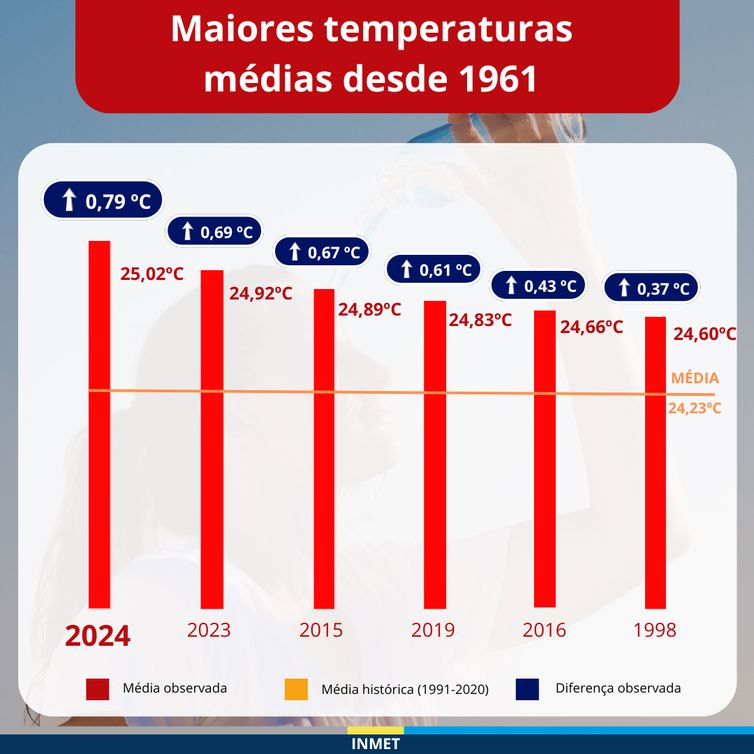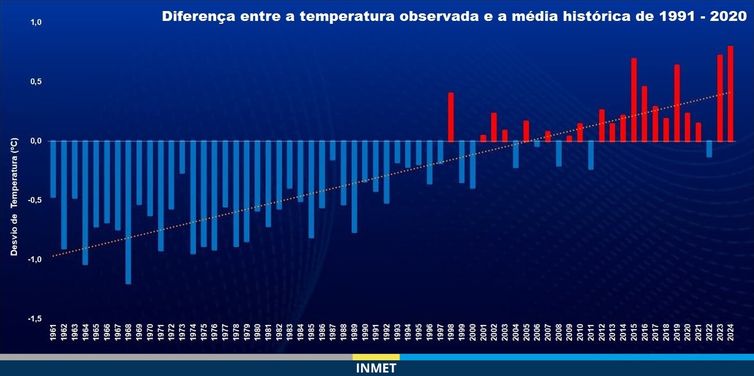The National Institute of Meteorology of Brazil (Inmet), an organization linked to the Ministry of Agriculture and Livestock, pointed out the year 2024 as the hottest in Brazil in a survey that considered it since the year 1961. Furthermore, there was an upward trend of average annual temperatures over the analyzed period.
The survey was released this Friday (3). He reveals that registrations peaked last year. The average annual temperature reached 25.02°C. The 2024 data represents an increase of 0.79°C compared to the historical average of the last two complete decades, that is, from 1991 to 2020. In this interval, used by Inmet as a reference in the analysis, the average temperature was 24 .23°C.
Inmet points out that the records for 2024 surpass those of the previous year, which was until then the hottest in the period starting in 1961. The annual average for 2023 was 24.92°C, that is, 0.69°C above the historical average of the last two complete decades.
According to Inmet, when observing the deviations that the average temperatures of each year since 1961 present in relation to the historical average between 1991 and 2020, it appears that the increasing trend is statistically significant. “It may be associated with climate change due to rising global temperatures and local environmental changes”, points out the agency.
Inmet also highlights that it is necessary to consider the effects of the latest El Niño phenomenon. With intensity that varied from strong to very strong, it had an influence on temperatures in 2023 and the first months of 2024.
El Niño is a natural phenomenon characterized by the weakening of the trade winds (which blow from east to west) and the abnormal warming of surface waters in the eastern portion of the equatorial region of the Pacific Ocean. These changes in the interaction between the ocean surface and the lower atmosphere occur over time intervals that vary between three and seven years.
Its intensity is also variable, but whenever it occurs there are consequences for the weather and climate in different parts of the planet. This is because the dynamics of air masses in the Pacific Ocean adopt new patterns of moisture transport, affecting temperature and rainfall distribution.



















